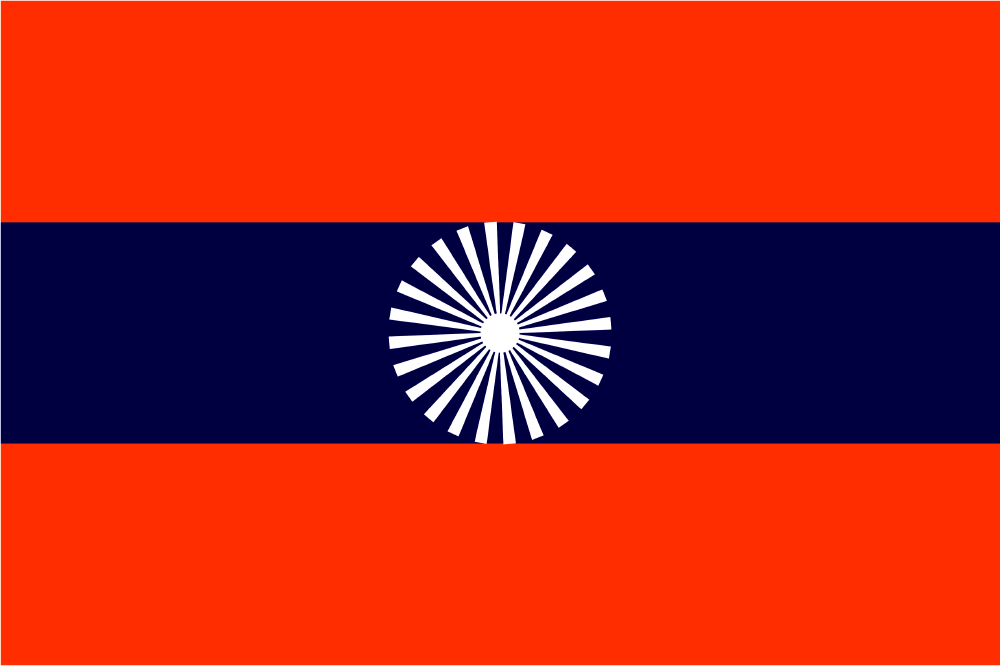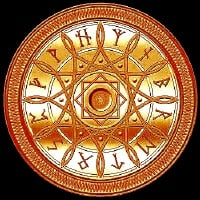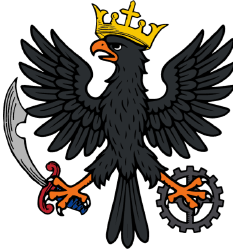| History: |
The History of Merkezistan: From Nomadic Roots to Imperial Legacy
Merkezistan, a land of vast plains, towering mountain ranges, and bustling trade routes, has always been a nation of ambition and resilience. Its history is one of grand empires, powerful rulers, cultural evolution, and strategic maneuvering—each era shaping the next in an unbroken chain of transformation.
The Dawn of Civilization: The Merkians and the First Settlements (c. 2000 BCE – 1200 BCE)
Long before the grandeur of empires, the Merkians roamed the fertile river valleys of Merkezistan. These nomadic tribes, skilled in metalwork and celestial observation, built the foundations of civilization through their elaborate religious rites and mastery of trade. Tarzáɓo, the oldest recorded city, rose as a beacon of progress, drawing merchants, scholars, and artisans from surrounding lands. Its residents worshipped the stars, believing their fates intertwined with cosmic patterns.
In this era, Merkezistan was not a unified entity but a collection of loosely allied clans, each vying for dominance over trade routes and arable land. Over centuries, conflicts flared, alliances shifted, and a leader emerged—the one who would unite Merkezistan under the banner of empire.
The Rise of the Meridian Empire: Xora Dreya’s Legacy (c. 1200 BCE – 800 BCE)
With wisdom unmatched and strategic prowess that defied expectations, Xora Dreya ascended to power, uniting the fragmented territories into a singular force—the Meridian Empire. Known as the "Architect of Destiny," Dreya built a legacy not only through conquest but also through diplomacy. Under their rule, sprawling road networks stretched across Merkezistan, connecting cities and trade hubs with unprecedented efficiency.
Merkar, the empire’s capital, became a marvel of engineering, with towering stone structures, sophisticated irrigation systems, and bustling markets. Dreya’s leadership ushered in a golden era of administration, fostering innovation in governance, infrastructure, and military strategy. Their famed decree—Merkezya Kodye—established the rule of law, ensuring justice and stability throughout the empire.
Under Dreya’s reign, Merkezistan became a nexus for commerce, drawing traders from distant lands. Eastern merchants brought silk and spices, while northern traders supplied rare minerals and weapons forged in their icy workshops. The empire thrived on its diversity, assimilating various cultural influences into its ever-expanding identity.
Conquests and Cultural Fusion: The Tides of Change (800 BCE – 500 CE)
As the centuries unfolded, Merkezistan faced waves of foreign incursions. The Atroxian warriors from the west sought to claim its riches, while merchant kings from the east sought political influence. These encounters, though tumultuous, enriched the nation’s traditions. The architecture of Merkezistan reflected its blended heritage—ziggurats, domed palaces, and intricate stone carvings adorned its cities.
Despite conflicts, Merkezistan maintained a resilient spirit. Generations of rulers followed Dreya’s example, balancing military might with strategic diplomacy. The empire’s scholars made profound discoveries in medicine, astronomy, and metallurgy, pushing the boundaries of knowledge. The famed astronomer Asdoi Fejye, a visionary of the 3rd century CE, mapped celestial movements with precision, paving the way for future astronomical advancements.
The Golden Age: Intellectual Flourishing and Global Influence (900 CE – 1400 CE)
Between the 10th and 14th centuries, Merkezistan witnessed a renaissance of learning, arts, and economic prosperity. Cities like Merkar and Tarzabad became epicenters of philosophical discourse and technological breakthroughs. Scholars from distant lands traveled to study Merkezistan’s texts, and poets wove tales of heroism and wisdom.
The famed scholar Har Niok developed groundbreaking mechanical devices, some of which laid the groundwork for early automatons and hydraulic systems. Alchemists experimented with metals and compounds, uncovering rudimentary chemistry principles that would influence global knowledge.
At this time, Merkezistan wasn’t just a nation—it was an intellectual powerhouse, shaping thoughts and discoveries far beyond its borders.
Colonial Intrusions and Resistance (1700 CE – 1909 CE)
By the 18th century, Merkezistan’s wealth and strategic position made it a target for foreign powers. Colonial forces sought control over its resources, leading to a turbulent period of resistance and rebellion. The people of Merkezistan, never ones to succumb easily, launched underground movements to reclaim their sovereignty. Tales of covert operatives and fiery uprisings filled the annals of history.
It was in the late 19th century that the tide finally turned. A coalition of resistance leaders, uniting scholars, warriors, and merchants, reclaimed Merkezistan’s independence. The nation emerged battered but unbroken, ready to forge its own future.
Modern-Day Merkezistan: A Legacy of Resilience (1909 CE – Present)
Today, Merkezistan stands as a beacon of strength, blending its storied past with modern innovation. Its cities juxtapose ancient landmarks with cutting-edge advancements, and its people carry the spirit of their ancestors—bold, adaptive, and driven. Though the world has changed, Merkezistan remains a land of crossroads, ambition, and destiny. |
| History: |
Merkez Gresa: The Shield of Merkezistan
Merkez Gresa, the formidable military force of Merkezistan, stands as a symbol of resilience, discipline, and national pride. Rooted in centuries of tradition and shaped by modern warfare strategies, it embodies the unwavering spirit of the Merkez people. From its elite divisions to its strategic doctrines, Merkez Gresa is a force to be reckoned with.
Origins and Evolution
The origins of Merkez Gresa trace back to the early days of Merkezistan’s formation. Initially composed of loosely organized militias, the army evolved into a structured force under the leadership of visionary generals. Over time, it adapted to changing warfare dynamics, incorporating advanced technology, specialized training, and a deep-rooted sense of duty.
Structure and Organization
Merkez Gresa is divided into several branches, each playing a crucial role in national defense and global operations:
Pritvan Gresa : The backbone of Merkezistan’s military, equipped with cutting-edge armored vehicles, infantry units, and artillery divisions.
Vyomvir Gresa : A highly trained aerial division, boasting state-of-the-art fighter jets, reconnaissance aircraft, and strategic bombers.
Somdra Gresa: Merkezistan's naval forces operate in open waters, specializing in amphibious warfare and maritime security and underwater reconnaissance.
Míráx̌: Merkezistan's secretive intelligence bureau, responsible for gathering crucial information, infiltrating enemy operations, and ensuring Merkezistan’s national security. They handle only international espionage operations. Internal Espionage is carried out by the Sokrana.
Ístatun Resevpolìx̌ (State Reserve Police): Abbreviated as ÍRP, this is the paramilitary branch of the Merkez Gresa and is tasked with maintaining law and order during national crises, fighting insurgencies and conduct counter-terrorism operations.
Sokrana: This is the secret police force of Merkezistan. They are tasked with controlling opposition against the regime, sabotage anti Merkezistan activities, protect the Kax̌ar, promote nationalist propaganda and closely monitor every government department so as to prevent political instability. They are also tasked with internal espionage. Intel about Internal Security threats are shared with the ÍRP.
Military Doctrine and Strategy
Merkez Gresa follows a doctrine of "Brutal but Coordinated retaliation" This philosophy ensures that the nation remains prepared for any threat while maintaining a strong defensive and if necessary an offensive posture. The army prioritizes:
Technological Superiority: Investing in cutting-edge warfare tools, advanced surveillance systems, and precision weaponry.
Allied Cooperation: Maintaining strong diplomatic and military ties with neighboring nations to ensure regional stability.
Training and Discipline
Soldiers undergo rigorous training, emphasizing physical endurance, tactical awareness, and psychological resilience. The Merkez Defense Academy, known as Merkezya Raśka Akádeŋa produces some of the finest officers, instilling leadership qualities and strategic thinking. Meanwhile, Míráx operatives undergoes specialized training in espionage, deception, and counterintelligence, ensuring Merkezistan always remains one step ahead.
Future Prospects
As warfare continues to evolve, Merkez Gresa remains at the forefront of innovation. Plans for enhanced aerial combat capabilities, improved military infrastructure, and expanded alliances ensure that Merkezistan remains a formidable power. Míráx̌ to refine its techniques, ensuring national security through intelligence gathering and strategic operations. |














